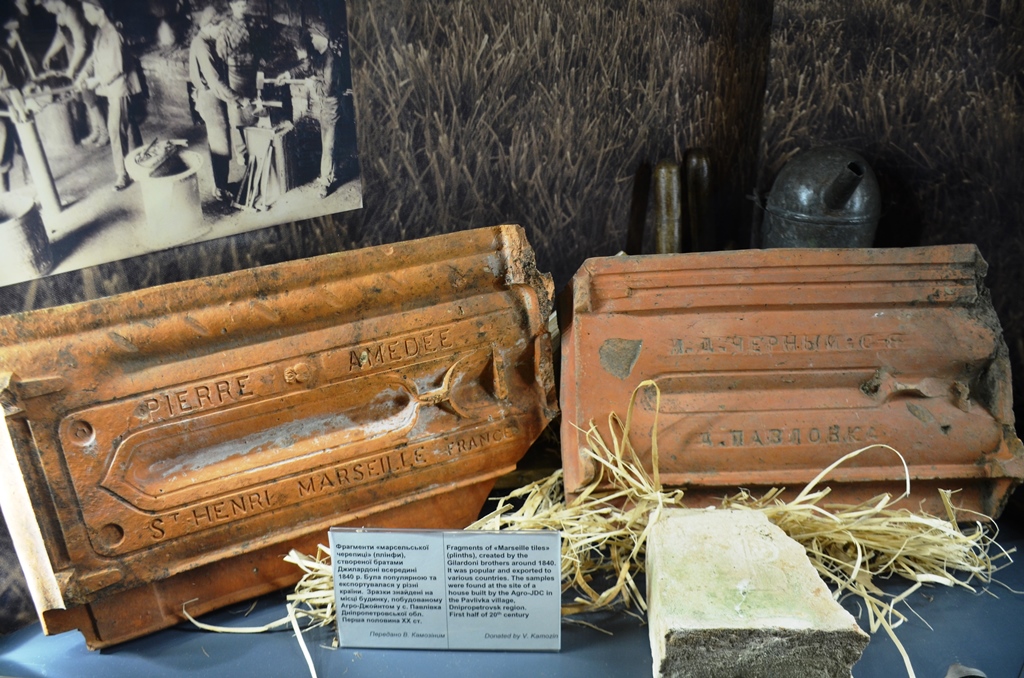Each exhibit of Museum “Jewish Memory and Holocaust in Ukraine” has its own history, gives an idea of the Jewish community’s life, in particular, of our Dnipropetrovsk region. Among such unique exhibits – bricks and tiles of the end of the 19th century – beginning of the 20th century, which were donated to the Museum by the United Jewish Community of Ukraine.
Brick from the building of the Jewish school in Izluchyste village, built in 1903. Stamp “V_D”. In 1823, the government of the Russian Empire allocated 50,000 rubles from the treasury. 443 families resettled from various provincial empires for placement in the old colonies and partly in the new colony of Izluchyste of the Katerynoslav province. In the new place, they established their daily life, organized socio-economic, cultural life, in particular, opened schools and other educational institutions.
In February 1930, on the basis of former Jewish agricultural colonies (Izluchyste, Novovitebs'ke, Novozhytomyr, Novokovno, Novopodil's'ke, Kam'yanka) of the former Kryvyi Rih district, the Izluchyste Jewish National district was formed. A year later, the district was renamed to Stalindorf, and the district center was moved from Izluchyste to a new settlement for immigrants, Chemerynsk, which became Stalindorf.
Tiles marked “d. Pavlovka”. They were found in Pavlivka village in the former Stalindorf district near the only unreconstructed typical house that was erected by the Joint (American Jewish Joint Distribution Committee). Such houses were built according to several typical projects and were considered technological for the villages of that time: they had large windows and even a room. The barn was part of the house.
Another tile comes from the Marseille suburb of Saint-Henri. Each craftsman of Saint-Henri had his own trademark. On this particular specimen, you can see a root crop, but there were also bees, strawberries, etc.
The peculiarity of this tile is that it was placed on a house built in 1927 in the Jewish agricultural settlement of Freileben (now the village of Privillya Bozhedarivska OTG). Such tiles began to be created by the Gilardoni brothers in 1840. Their products were quite popular outside the country and were exported all over the world. Samples of red and terracotta colors were supplied, in particular, to the Russian Empire. On the tiles you can see the marking of the Maltese cross, the location of the tile factory and the name of the manufacturer.

